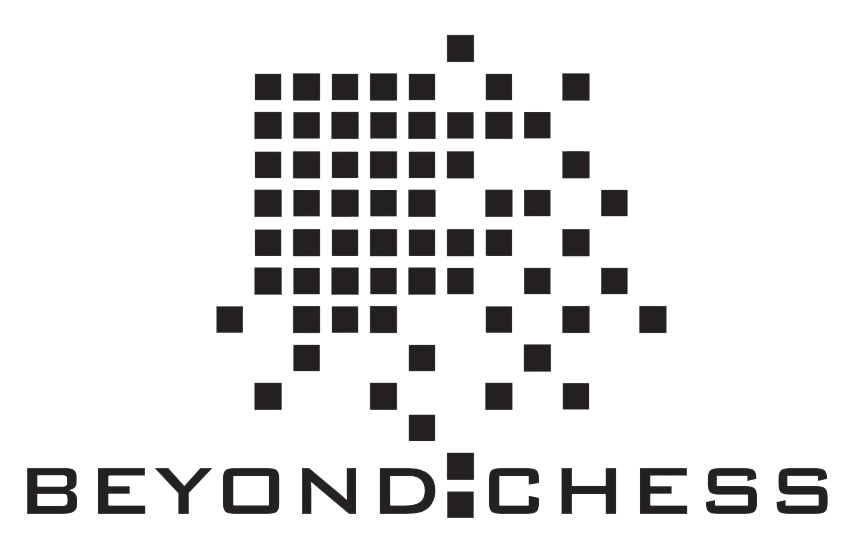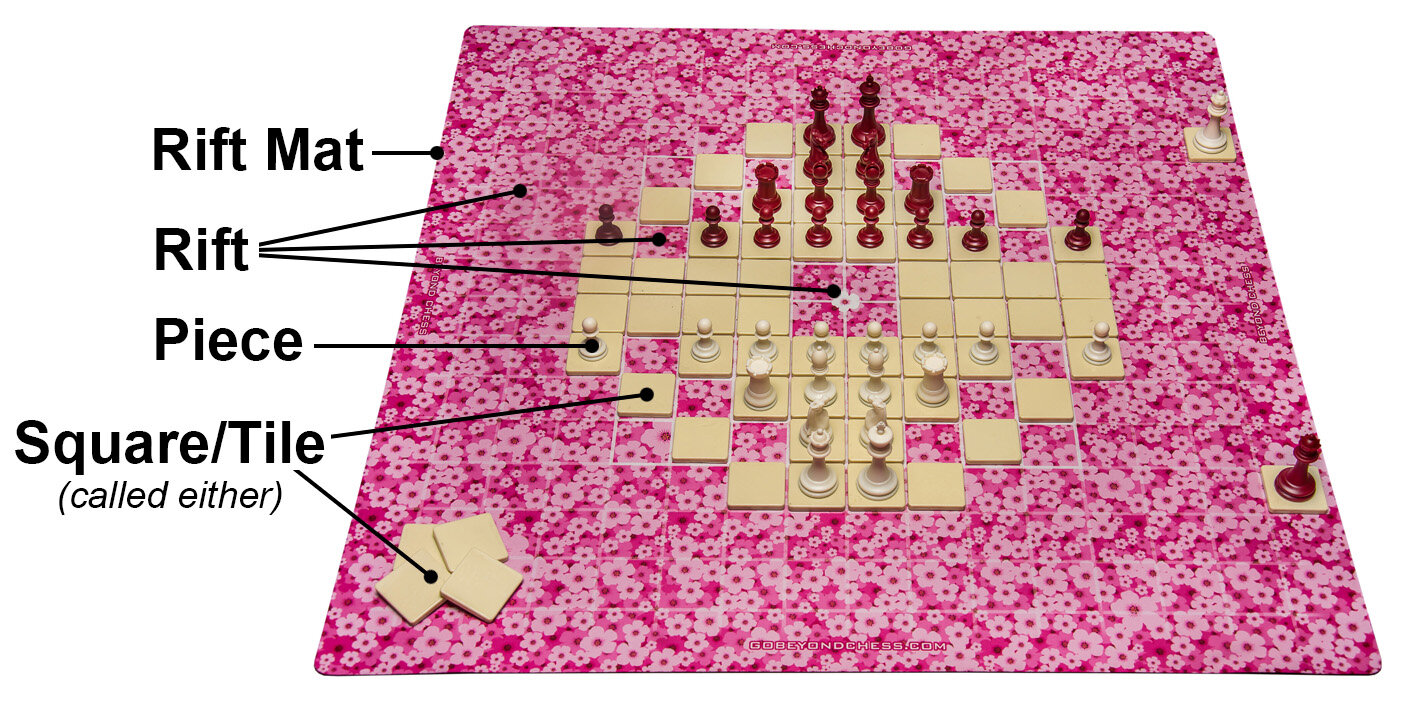Beyond Chess Quick Start Guide
Beyond Chess is chess played on a Kinetic Chess Board. The rules are simple, but the implications are infinite and stunning.
The concept of Beyond Chess is simple: It’s chess played on a moving board called a Kinetic Chess Board (patent pending). It seems simple enough, and the rules are. However, the implications an ever charging board has on the game are literally infinite. Beyond Chess is three times the strategy of chess (controlling the pieces, the squares and the rifts), yet, the three elements of the game work together like a elegant ballet of strategy and combat!
Beyond Chess board nomenclature.
The Beyond Chess squares may also be called tiles interchangeably. It is physically a tile, which represents a square of the board, so either works! We typically call them squares around our table, but tile works too!
Let’s get started! Here are the basic rules of Beyond Chess:
Board design can be set up in any configuration you would like. PRO TIP: For best gameplay, the design should be symmetrical, so each player has equal advantage at the beginning of the game. Each board design will offer new challenges and unique gameplay experiences! Placement of the chess pieces on the board can vary from board to board, too. Bobby Fischer would be very excited! You can build a board from our Board Library, or build one of your own, and explore the YOUniverse of chess! Beyond Chess isn’t just another chess variation, it’s EVERY variation and only limited by your imagination and how many tiles you have!
Order of Play: Move a piece, then shift an unoccupied square one space. Never shift a square first. You must shift a square after moving a piece. A square may not be shifted back to the same location consecutively. The square may be shifted to a different location, but may not be shifted right back, “undoing” a square shift. After the next move, the square may be shifted back. You must move a piece to get out of check, or it’s mate! Just like in traditional chess, you may never place your king in check, even temporarily, for either of your moves each turn. In other words, you may not move or expose your king into check and then move it out of check with a square shift.
The very first move of the game, white may only move a piece, but not shift a square, unless Gereting (covered in a bit). Black shifts the first square, after moving a piece. There after, every turn, each player moves a piece, then shifts a square. There is one exception to this rule. White may Geret a pawn on the first move if the layout permits. See ‘Gereting’, for more details.
SQUARE SHIFTING: Squares may be shifted left, right, up or down, but must always be connected to another square by a side or corner. You may only shift a square one space per turn. Squares do not shift diagonally. You may only shift unoccupied squares, unless you are Gerretting with a pawn.
Knights are the only piece that can jump over a ‘rift’ (empty area with no squares.) All other pieces must play around rifts. No piece may land on a rift.
GERETING: Gereting is a new special move where you can advance a pawn on its square by shifting them together. Pawns are the only piece that may Geret. You can Geret forward, left or right, but never backward. You may Geret only one space at a time and it completes your turn. You may not move another square after Gereting, since you already shift it with the pawn. Both white and black may Geret on their first turn. Don’t underestimate the power of Gereting! It can be a very powerful move!
Castling and en passant still work as long as the squares and pieces are positioned to allow it, under basic chess rules. To allow for castling, the rook must start on the same rank as the king, and placed within 2-5 squares away from the king. Although the king and rook must not have moved prior to castling, any of the squares between the king and rook may be shifted, as long as they are in place at the time of castling. If the rook is two squares over from the king (this may happen depending on the board setup), the king replaces the rook on its square, and the rook jumps over the king to occupy the square adjacent on the other side of the king. As in traditional chess, neither piece may have moved, and all squares must be in place with no other pieces blocking the castle. The king moves over two spaces, and the rook jumps over the king to occupy the square adjacent on the other side of the king. Some board designs may not allow for castling or en passant based on their initial setup. En passant only works as prescribed in traditional chess.
Draws and stalemates apply as prescribed in traditional chess.\
Beyond Chess Piece Point Value
Due to the Dynamic nature of Beyond Chess, the power, and thus, the point value of the pieces has shifted. The following point values more accurately represent the strength of each piece. Please keep in mind, this is the official point values of Beyond Chess. The actual strength of each piece can shift from board to board. Some boards may favor rooks, while others may favor pawns or knights. It’s a whole new YOUniverse of chess to explore!
Pawn 1
Rook 3
Bishop 5
Knight 7
Queen 9
King Infinite value
That’s the basics! Enjoy exploring the endless possibilities, challenges and strategy Beyond Chess offers! We will be launching our online version coming very, very, very soon, followed by the relaunch of the physical boards and rift mats. Until then, cut up some card board, make your squares and start exploring Beyond Chess!
For a full demonstration of the game being played, please watch our totally cool video:


